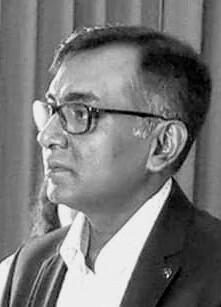Time management is very much important in IIT JAM. The eduncle test series for IIT JAM Mathematical Statistics helped me a lot in this portion. I am very thankful to the test series I bought from eduncle.
Nilanjan Bhowmick AIR 3, CSIR NET (Earth Science)- UGC NET
- English
Do provide key information on northorp frye's anatomy of criticism
do provide key information on northorp frye's anatomy of Criticism
- 0 Likes
- 2 Comments
- 0 Shares
-
![comment-profile-img]() >
>
-
![comment-profile-img]() >
>
Deb dulal halder Halder Best Answer
Criticism is necessary: there is no direct correlation between the merits of art and its public reception. Frye rejects both the Romantic and the Art for Art's sake approaches. (4): "Consequently there is no way of preventing the critic from being, for better or worse, the pioneer of education and the shaper of a cultural tradition." The Tolstoyan and Art for Art's sake brutalizing of criticism lead to cultural impoverishment. Further, "Criticism can talk, and all the arts are dumb." Criticism, then, has a measure of independence from art as a structure of knowledge. It derives from the conscious mind and the active will; it judges value and is the final judge of meaning. (5): "Ibsen is an indifferent critic of Ibsen"; in no way an artist's opinion on his work is final. (6): "The notion that the poet necessarily is or could be the definitive interpreter of himself or the theory of literature belongs to the conception of the critic as a parasite or jackal." There is also the fallacy of determinism, of assimilating the whole of criticism to a critical attitude (Marxist, Existentialist, etc.). (7): "Critical principles cannot be taken over ready-made from theology, philosophy, politics, science, or any combination of these," but only from knowledge of literature (inductive, or systematic, "scientific" in that sense). (9) Still, there is no way of distinguishing the systematic element from that belonging to the history of taste—cf. the "systematic" scholar vs. the "public" critic. Both are linked not merely by interest in literature, but by an intermediate form of criticism, (11): "a coherent, and comprehensive theory of literature, some of which the student unconsciously learns as he goes on, but the main principles of which are as yet unknown to us"; then what we learn is criticism, not literature. Art makes a conceptual universe of its own: there is the possibility of a comprehensive view of criticism. But general criticism is paralyzed where the Greeks left it (e.g. there are no standards to define literature, no name for a 'work of verbal art' or 'a work of prose fiction' in general). (14): "What critics now have is a mystery—religion without a gospel." An Aristotelian poetics is necessary, within the framework of a useful aesthetics. The progress of all science can be seen as a move towards seeing former primary data as something requiring explanation: from induction to looking for the structure of each science. Criticism is still in a naive inductive stage; there is a need for systematizing the pile of "works" with something more than chronology or influence or "tradition". Universal formulas reappear from primitive to great literature (the greater the more clearly it points to the center of a conceptual space). (17): "It is clear that criticism cannot be a systematic study unless there is a quality in literature which enables it to be so." But there is no limit to the activity of criticism: Literature is an inexhaustible source. Then, there is no definite meaning or beauty which can be extracted from it [This seems to suggest a creative dimension in criticism, a creation of meanings and of beauties - JAGL]. The history of taste is not an integral part of the structure of criticism [This seems an overhasty conclusion- JAGL]. (19): "There are no definite positions to be taken in chemistry and if there are any to be taken in criticism, criticism is not a field of genuine learning." "One's 'definite position' is one's weakness." Criticism must enter into relations with other disciplines, but preserving its independence. The theory of literature is not concerned with value judgements [(!) Another overhasty position—perhaps one of those definite positions which are "one's weaknesses"? - JAGL ]. The objective explanation of value judgements is a permanent illusion in history. Biographical vs. tropical criticism: both use comparative value judgements; both have their favorite types of author (the genius vs. the craftsman). This is rhetoric criticism, unduly extended to the theory of literature through the 'touchstone' theory (cf. Aristophanes' Frogs). Criticism then proceeds to the ranking of poets; in Arnold's case as a means for substituting culture for religion. All this is based on questions of decorum (the three styles), while these are based on a the class structure of society; (22) "and criticism (...) obviously has to look at art from the standpoint of an ideally classless society." There is historical criticism vs. ethical criticism, i.e. things only in their context vs. things only in our context. (25): "The dialectic axis of criticism, then, has as one pole the total acceptance of the data of literature and on the other the total acceptance of the potential values of these data." Normativism must disappear and comparisons will take care of themselves. (27): "The real concern of the evaluating critic is with positive values, with the goodness, or perhaps the genuineness, of the poem rather than with the greatness of its author". The judgement of greatness is intuitive; the incommunicable experience at the heart of criticism makes it an art, but is not a sound basement to work on. Sometimes the critical response reacts against involuntary pleasure, etc. The schematic nature of this Anatomy is deliberate. There is a place for schematization and classification in criticism; part is scaffolding, the rest is systematic study.
Do You Want Better RANK in Your Exam?
Start Your Preparations with Eduncle’s FREE Study Material
- Updated Syllabus, Paper Pattern & Full Exam Details
- Sample Theory of Most Important Topic
- Model Test Paper with Detailed Solutions
- Last 5 Years Question Papers & Answers
Sign Up to Download FREE Study Material Worth Rs. 500/-










 >
>







Deb dulal halder Halder![best-answer]()
In 1957, the Canadian critic Northrop Frye published Anatomy of Criticism, a text that blends the moralism of Arnold with the speculative insights of the Cambridge ritualists. The sheer inclusiveness of Frye’s work, together with the close and rigorous readings which he presents, have given this work the status of a twentieth-century classic, a ‘masterwork of modern critical theory’. Frye’s system projects the seasonal cycle on to the four narrative categories of comedy, romance, tragedy and irony. These generic markers are crossed with patterns of isolation (the tragic) and integration (the comic). In western literature, these narrative and thematic elements are the territory of a hero who is, respectively, mythic, romantic, tragic, comic and ironic; this ‘ironic’ hero (as created by Joyce and Kafka for instance) is seen as a renewer of the cycle: ‘Irony . . . begins in realism and dispassionate observation. But as it does so, it moves steadily towards myth and dim outlines of sacrificial ritual and dying gods begin to reappear in it.’